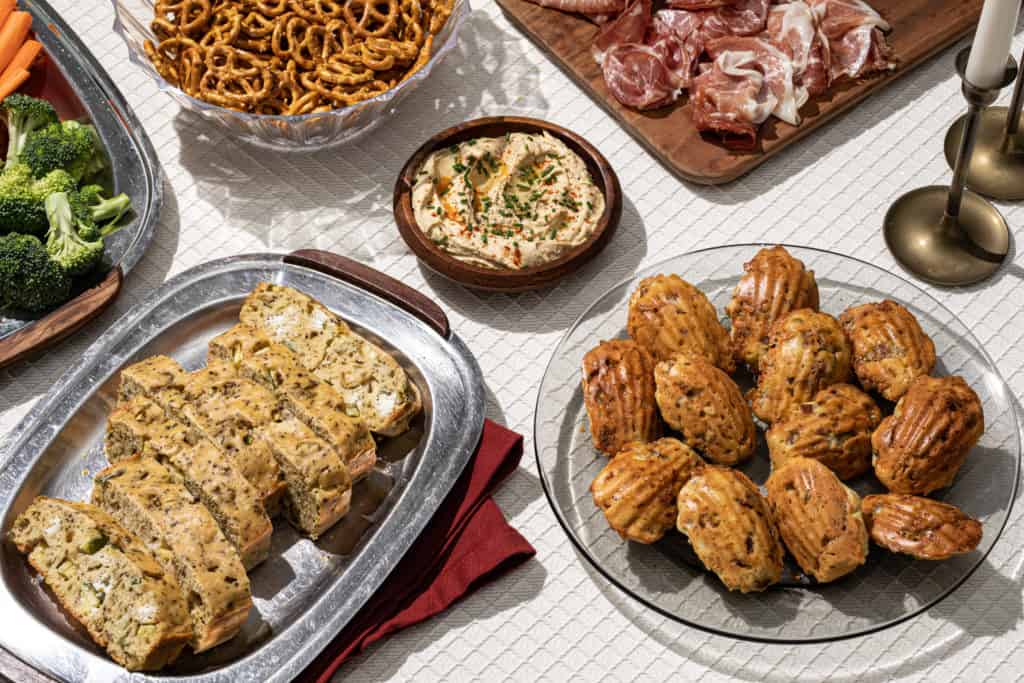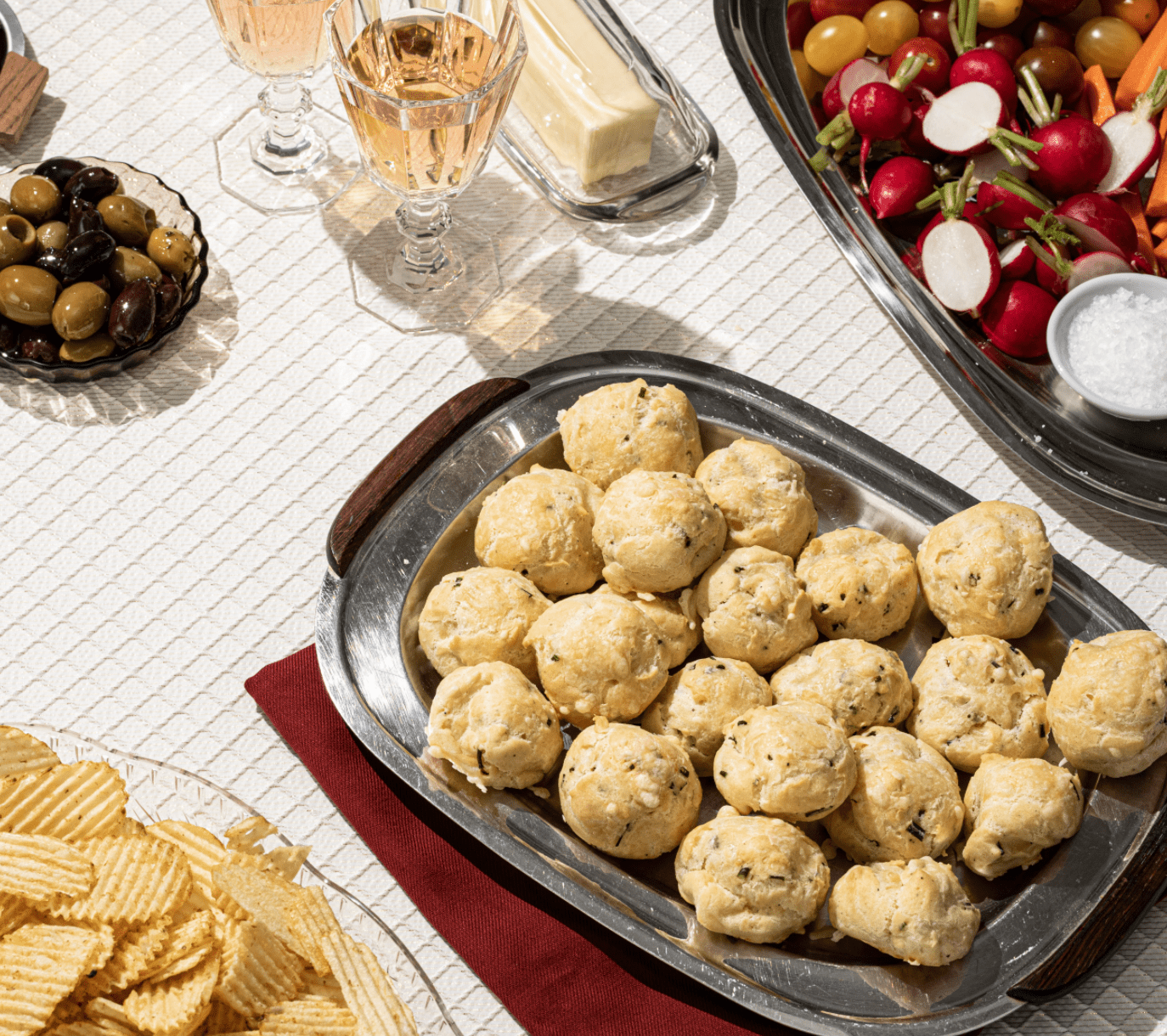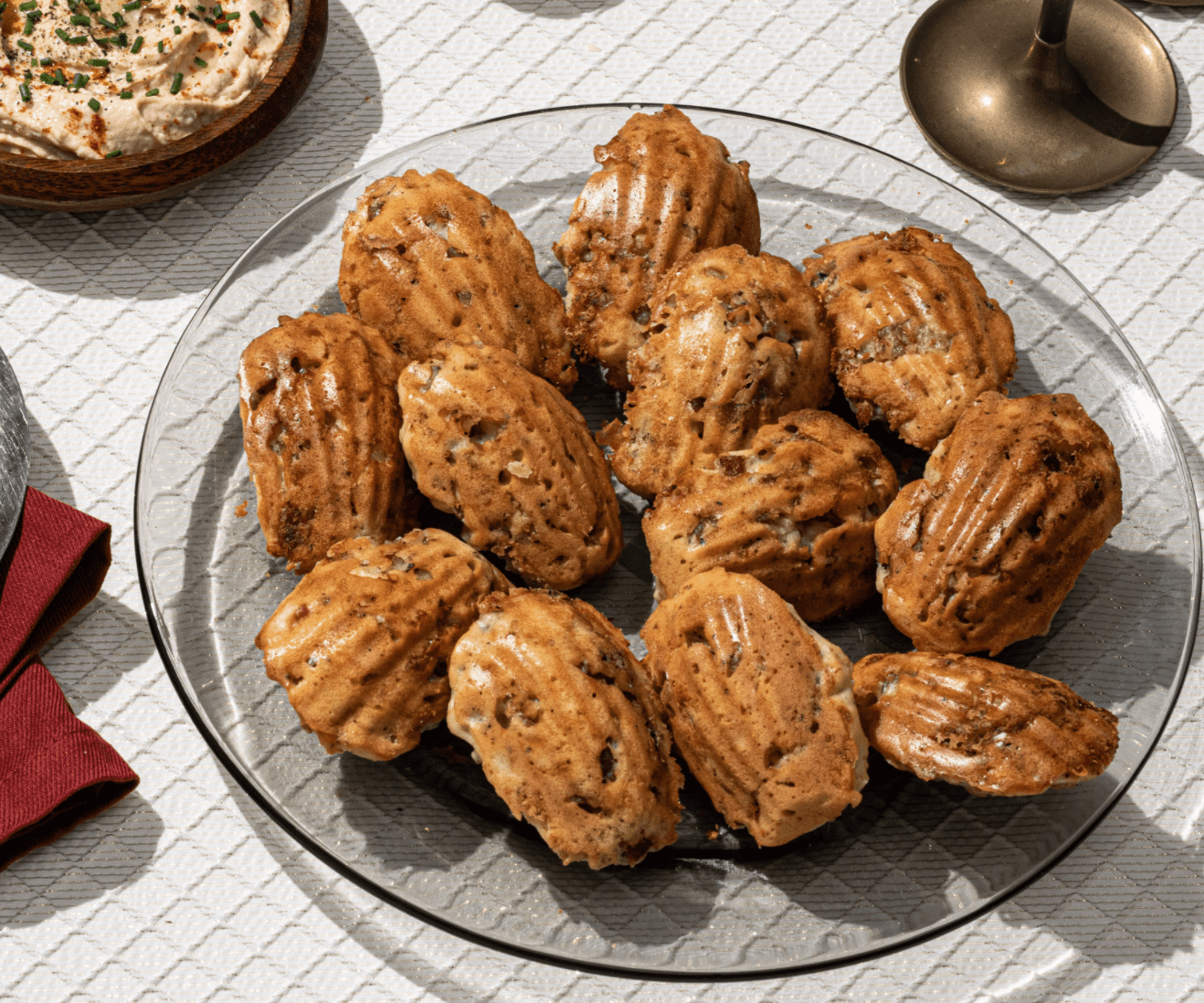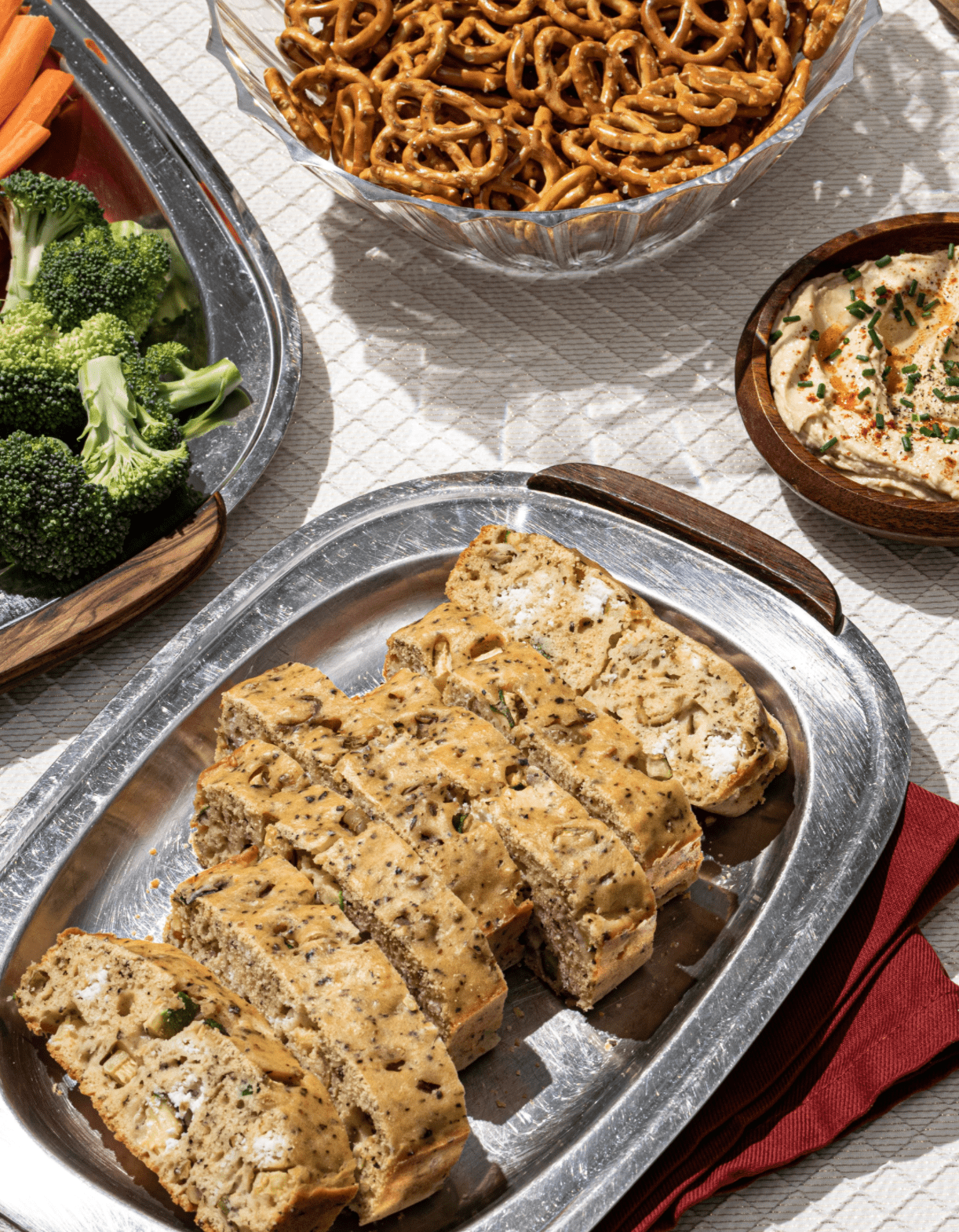
Photographed by Adam DeTour | Styled by Kendra Smith
In France, the art of good living is a quintessential part of the country’s cultural fiber. Taking time to savor food and drink—preferably in good company—is not a virtue for the french, but a way of life. One of the best examples of this is their beloved apéro, a tradition that goes back to ancient times when the Greeks and Romans were happily raising glasses before the start of a meal.
Short for apéritif, which refers to the actual drink, the apéro is the ultimate way to escape the daily hustle and bustle and shift into relaxation mode. In essence, it’s not so much about what’s on the table, but about the social aspect of coming together with loved ones and relishing the moment. Nevertheless, there are some tips to keep in mind if you’re looking to recreate that authentically French apéro experience at home.
Let’s start with the choice of tipple. An apéro should whet the appetite—not spoil it. Opt for light and refreshing drinks such as white wine, rosé, or sparkling wines. Red wines can be a bit too robust and are best served with meals. Typical French apéritifs include the Kir (dry white wine mixed with crème de cassis), Lillet, Suze, and Pastis.
The same idea applies to the choice of fare. This isn’t meant to be a full meal, so a few carefully chosen foods will suffice. While l’heure de l’apéro (apéro hour) does not require special cooking skills (a bowl of quality chips, roasted nuts or pretzels are common offerings), it’s an excellent excuse to stop by your local delicatessen or gourmet food store on the way home from work to pick up a selection of decadent delights. Think artisanal charcuterie, crisp vegetables with hummus, sourdough baguette with dips (tapenade, pesto, or even just good extra virgin olive oil sprinkled with fleur de sel and pepper), deviled eggs, marinated olives, and the utterly French classic of pink radishes with salted butter. Adding a wheel of Camembert or a wedge of crumbly Roquefort might sound tempting, but bear in mind that in France, fromage isn’t part of the apéro repertoire—it’s served as a separate course, before dessert.
That’s not to say, however, that cheese doesn’t find its way into all kinds of apéro-appropriate finger foods. If you’re in the mood to make your apéro really stand out, head into the kitchen and whip up some French classics that look impressive but are easy to make. Take the cake salé, for example. This savory French cake (also a favorite at picnics and summer lunches) can be jazzed up with just about any type of cheese, seasonal vegetables, and fresh herbs. Madeleines also have that wonderful versatility. The tender, shell-shaped cakes made famous by 19th-century author Marcel Proust in his masterpiece, In Search of Lost Time, aren’t just meant to be sweet! And if you really want to take things up a notch, try your hand at making gougères. Though these irresistibly light and delicate cheese puffs from Burgundy are usually made with Comté, any hard cheese will work just fine. You can also add strips of sun-dried tomatoes or finely chopped crispy bacon to the batter. They can even be filled with cream cheese or tangy whipped chèvre.
It’s that element of ease (no need to spend hours in the kitchen) combined with a generous dose of conviviality that makes hosting an apéro so attractive. No wonder we’ll gladly borrow this delicious tradition from our friends in France!
RECIPES + BEVERAGE PAIRINGS
Gougères
Though most hard cheeses will work well in gougères, opt for a young Comté with floral notes, a mild lactic tang, and nutty aromas. The cheese’s complex flavors will be a match made in gourmet heaven when paired with vin jaune. Similar to sherry, this amber-colored wine from the Jura is aged in oak barrels for a period of six years. The result is a sophisticated wine redolent of roasted hazelnuts and aromatic dried fruits. Alternatively, try a crisp Chablis from northern Burgundy. Its bright minerality, hints of honey, and saline notes will pair well with the fruitiness of a younger Comté.
Roquefort, Ham, and Walnut Madeleines
The bold, earthy flavors and smoky notes of Roquefort really shine through in this recipe. Pair the madeleines with a Coteaux du Layon from the Loire Valley. Made with late-harvest (botrytized) chenin blanc grapes, this robust wine is velvety and unctuous yet still has enough refreshing acidity to balance the intensity of the cheese.
Cake Salé with Goat Cheese, Zucchini, and Green Olives
A creamy chèvre with delicate, buttery notes and a whisper of citrus will work well in this cake, but you can also try it with the zestier flavors of a ripe Chabichou du Poitou from the Poitou-Charentes region. Both options would work well with a lively Sancerre. The wine’s chalky minerality and herbaceous aromas will complement the tang of the cheese as well as the grassiness of the zucchini and salinity of the olive.







